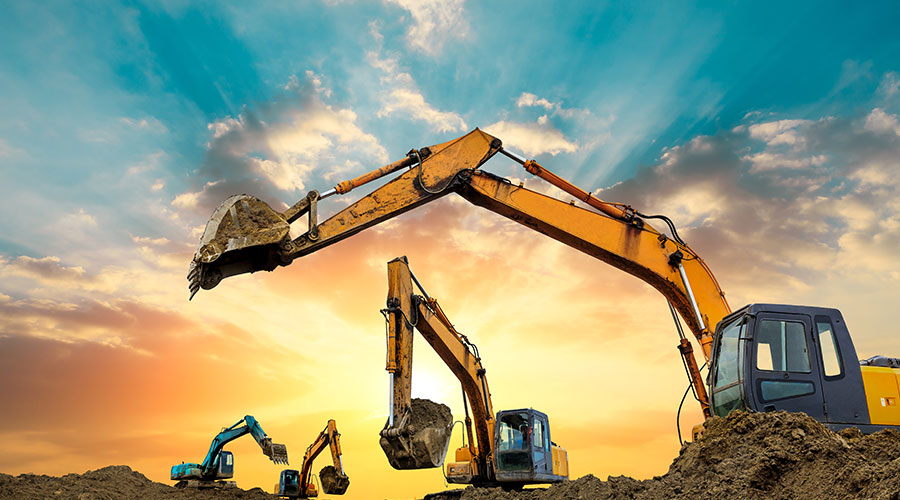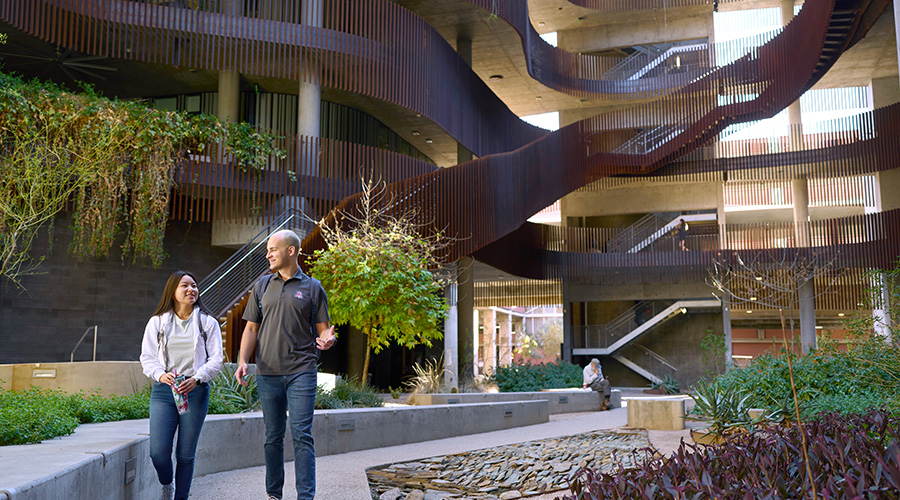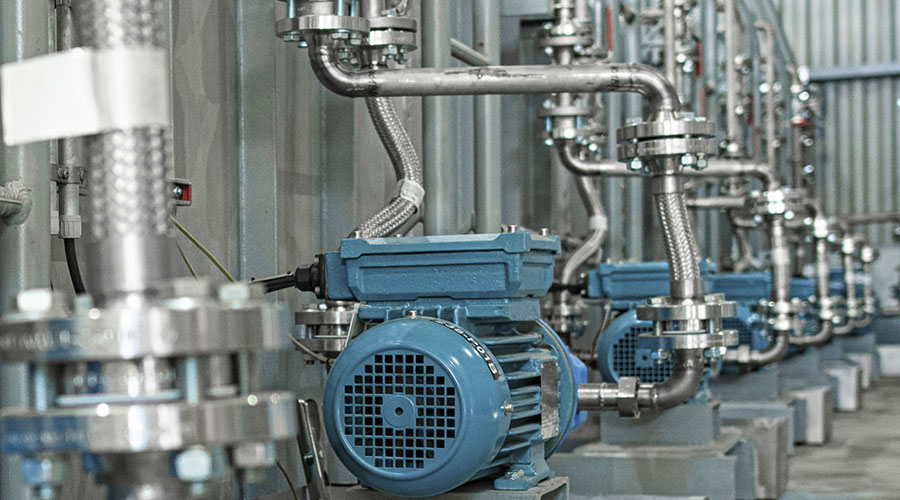Small but Mighty: How Light Construction Equipment Is Changing the Jobsite
From PPE to training and daily inspections, safety fundamentals are essential when operating compact machines.
When picturing a construction site, most people would close their eyes and visualize giant excavators, monster cranes and trucks the size of a small army. Little do people know that construction and grounds maintenance projects are often helmed by “the little guys.”
Light construction equipment, such as compact wheel loaders, mini excavators, skid steers, stump cutters, mulchers, plate compactors, vibratory rollers and trenchers (just to name a few) are often underutilized and underappreciated champions of construction and maintenance crews around the globe. More and more facilities and ground managers are turning to these pieces of equipment to reduce costs, enhance safety and boast less noise pollution.
But with new equipment comes new responsibilities. While becoming more and more critical to ground operations, it’s important for ground managers to know how to use these pieces of equipment safely and efficiently – while also training those around them as well.
Start From the Beginning
Managing risks is everyone’s responsibility on a project site, but every year, workers unfortunately fall victim to serious injuries or even tragic fatalities. That’s why there is no backup plan when it comes to safety. Successful training – and a safe work environment – help to mitigate these risks and avoid unnecessary accidents.
Ensuring that your crew stays safe starts with a comprehensive training and safety plan for any piece of equipment on the jobsite. According to the Occupational Safety and Health Administration (OSHA), safety training programs are highly effective. In fact, workplaces with safety-focused programs tend to see 17 percent more productivity than those without. But research says that 75 percent of employees feel their employers can do even more for safety training.
In an article called, “11 Processes and Protocols that Boost Construction Safety,” United Rentals boasts that safety practices are successful when they’re built into the way teams think and operate: “For every new jobsite, create a site-specific safety plan that identifies potential hazards— from contact with overhead power lines to trench collapse—and outlines the strategies for controlling or eliminating them.” Then present the plan to workers, and update it as the work progresses with their input and expertise.
It’s crucial for workers to buy-in to the overall culture of safety and responsibility. Otherwise, one person can put everyone else on the jobsite at risk. That’s why teaching your team common safety hazards is crucial; understanding and recognizing the four most important risks for workers, which are falls, caught-in or -between incidents, struck-by incidents and electrocutions, can ultimately prevent disaster.
PPE Means Protection
Personal Protective Equipment (PPE) is one of the first considerations for worker safety when it comes to light construction equipment. It doesn’t matter what industry you’re in, what equipment you’re working with or what kind of conditions you encounter, PPE is a must.
OSHA standards outline five main categories of PPE: eyes and face, head, ears, hands and feet. Each of these PPE categories contains specific products that prevent injuries from different hazards. When it comes to operating equipment such as mini skid steers, Trevor Koolmees, product group sales manager, Vermeer, says a critical piece to operator safety is understanding PPE necessities.
“Before operating any machine, operators should review the equipment manual for specific PPE requirements. But standard PPE required when operating equipment includes OSHA-certified eye protection that wraps around the eyes, hard hats to protect from falling objects, safety shoes with toe and metatarsal guards, and hearing protection in the form of earplugs.”
Other considerations are heavy-duty, well-fitting gloves for hand protection and high visibility vests, which are essential when working around moving vehicles and construction equipment.
“Operators should never wear jewelry or loose-fitting clothing that could become catch points, and long hair must be confined. When working near traffic, high-visibility or reflective clothing is mandatory,” says Koolmees.
Many pieces of light construction equipment, such as the Vermeer CTX160 mini skid steer, can handle a multitude of attachments, which makes them more flexible and efficient. However, accessories like sprayers, pressure washers, air compressors, rakes and snow plows all add an additional learning curve when it comes to training.
“It’s important to review attachment manuals and decals to check if any additional PPE is required for specific attachments being used,” says Koolmees.
Safety First
Running a safety program for light construction equipment means having a standard operating procedure that sets expectations for all equipment operators, as well as employees on the ground. Leadership should hold daily meetings that cover proper PPE usage, project precautions, site changes, roadblocks and safety measures. Basic communication amongst the team is an easy and effective way to minimize risk and boost respect.
United Rentals suggests developing a near-miss reporting system. “Near misses are valuable because they draw attention to hidden hazards or safety lapses. Teach workers why it’s important to report close calls, and make it easy for them to do so, such as with an anonymous feedback mechanism.”
When it comes down to it, operating light construction equipment is no joke; that’s why it’s critical for all equipment operators to learn the basics of operating safely. Any new piece of equipment shouldn’t be operated without first reviewing the operator’s manual and going through proper training.
Josh Jans, marketing manager, Sports Fields & Grounds, for Toro, says: “The Operator's Manual is always the number one source for safety guidance.” Jans says that companies like Toro also offer, “other resources, like training videos and online guides, that provide tips on safe operation and proper maintenance, which is also an important aspect of safety.”
Performing pre- and post-operating walk-around inspections is a great routine for operators and supervisors alike. Use a checklist to ensure that everything is working properly – consider lights, horn, backup alarm, brakes, etc. It’s important, too, for operators to know and understand speed restrictions, load capacities or clearance heights of their machines. Communicating these ahead of time before a project begins is a solid safety practice that will hold your team to a higher standard.
Another aspect of training, regular maintenance and adhering to a service schedule will also better guarantee safe operating practices. Knowing what kind of oil and lubrication is needed, part replacement, cleaning dirt and debris from mechanical components, and evaluating belts and filters will all culminate in safer, more effective work for your team.
For larger pieces of equipment, such as backhoes and compact wheel loaders, sometimes safety is as simple as mounting the machine correctly. “Equipment operators can fall, slip or trip by improperly mounting or dismounting equipment,” says an article called Construction Safety: The Ultimate Guide from The Cat Rental Store. “By rushing or not paying close attention, you can easily stumble or strain your lower back. Always observe the three-point contact rule when getting in and out of the cab.”
Alexis Sheprak is a freelance writer based in Michigan.
Related Topics:













